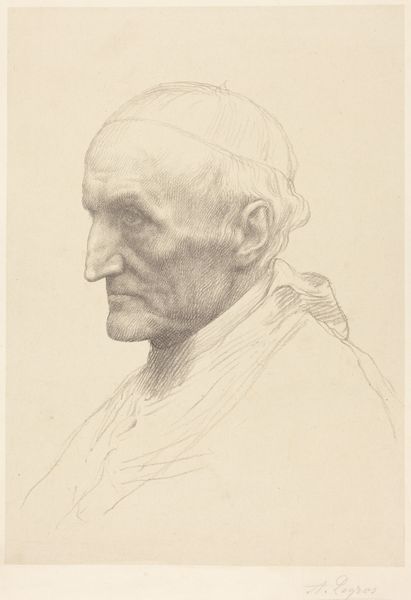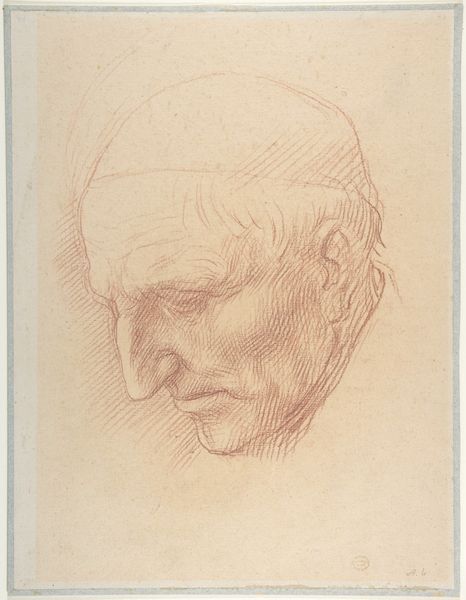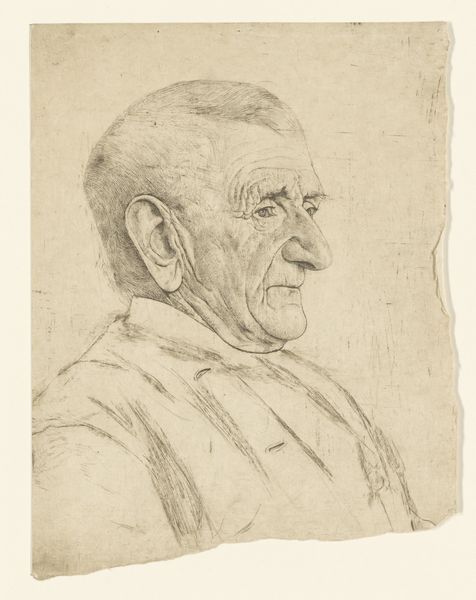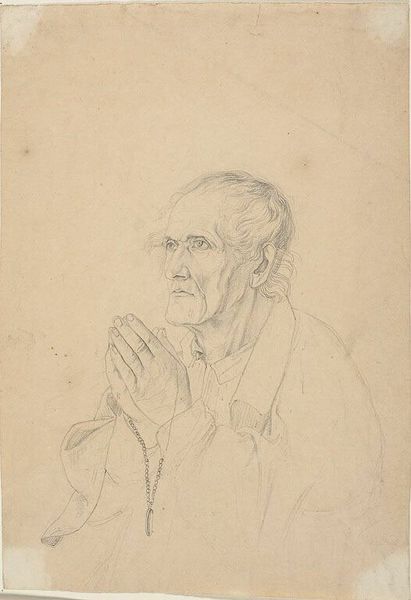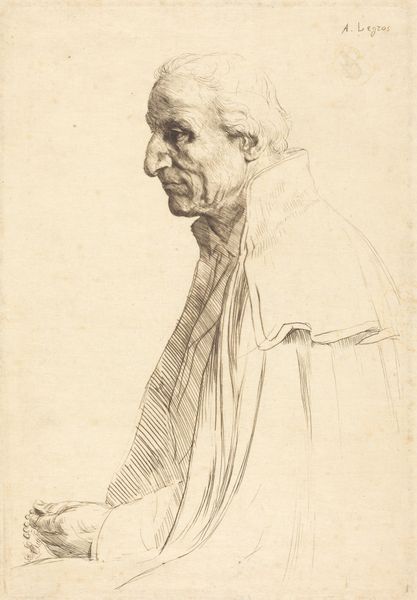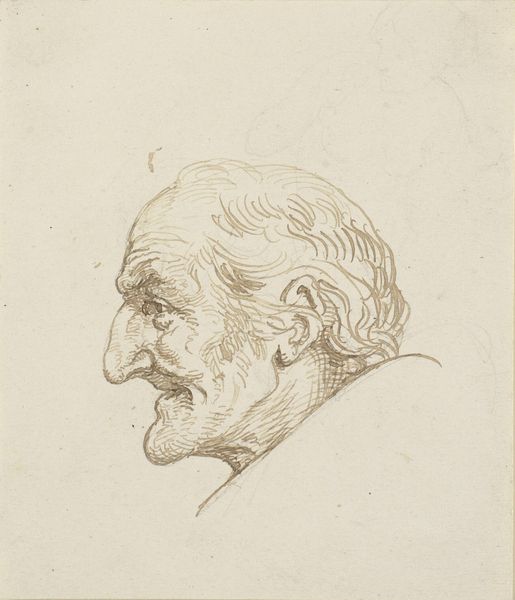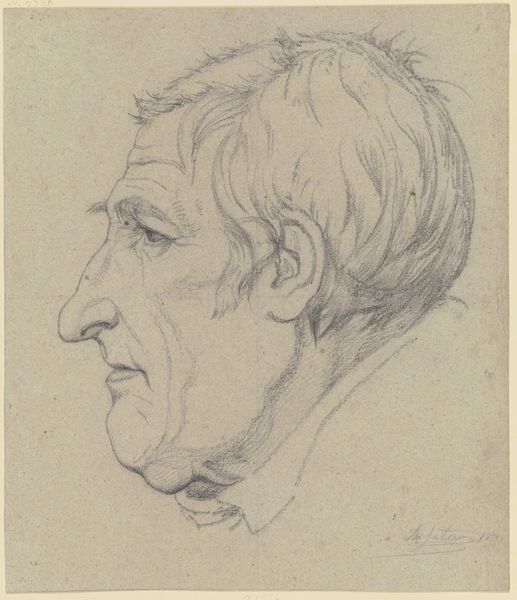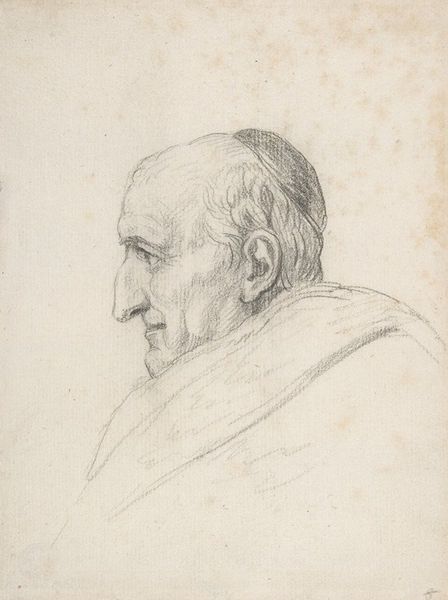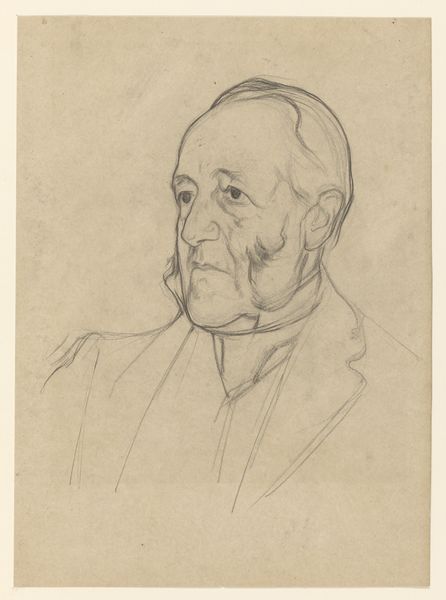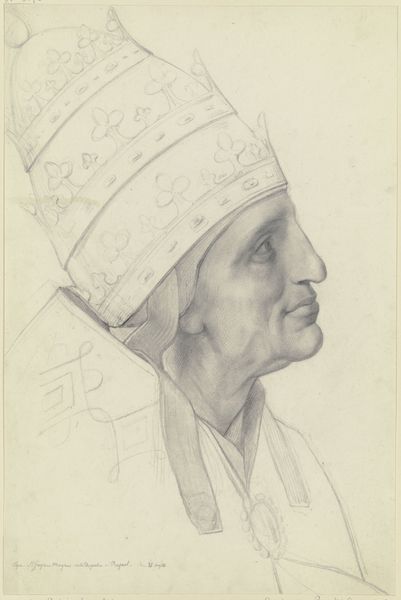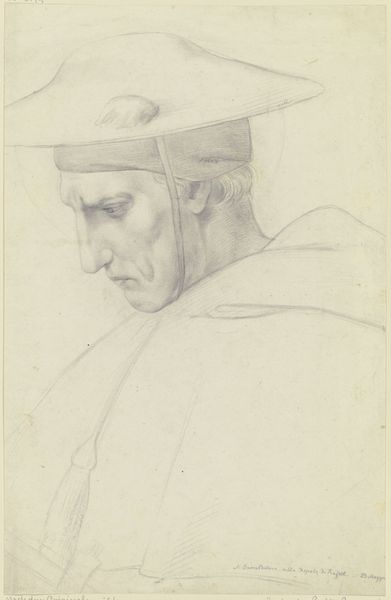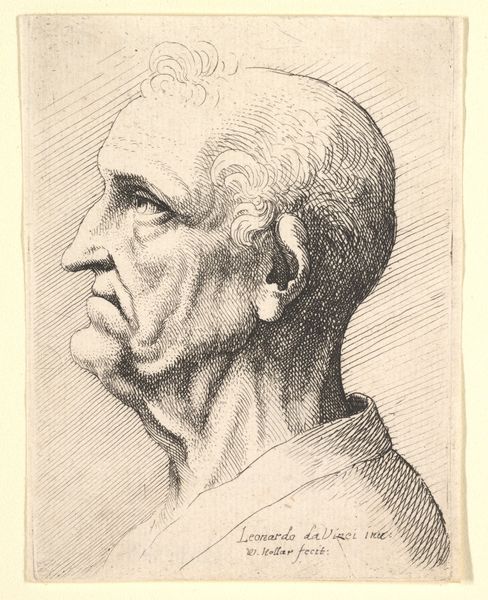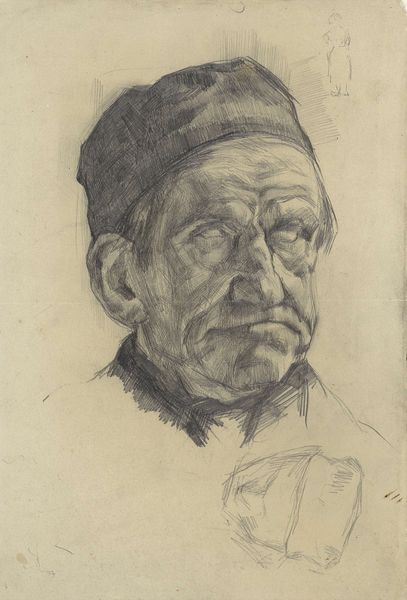
drawing, print, etching
#
portrait
#
drawing
# print
#
etching
#
line
Copyright: National Gallery of Art: CC0 1.0
Editor: Alphonse Legros's etching, "Cardinal Manning, 3rd plate", presents a somber profile. The subject's intense gaze and sharply defined features create a strong sense of character. As an etching, it’s fascinating to see how line alone conveys so much texture and depth. What strikes you about its formal qualities? Curator: Immediately apparent is the economical use of line. Consider the strategic variations in density and direction; Legros evokes form and volume with an extraordinary parsimony. The light seems to be emerging from within the figure, facilitated by the negative space around the subject. Notice the near-geometric precision in rendering the Cardinal's skull, juxtaposed with the more organic rendering of the face. It produces a sense of tension. What do you make of this opposition? Editor: It almost feels like Legros is contrasting the rigid structure of the Church, embodied by the skull, with the Cardinal's individual humanity and inner life, expressed through the softer, more nuanced rendering of his face. Curator: Precisely. Now, look at the cross-hatching employed. See how Legros uses that structural technique not merely to create shadow, but also to build the very substance of the portrait. The etching is a testament to the expressive power of the line itself. Editor: I see what you mean. Before, I simply saw a portrait. Now, I see a complex interplay of line and light, structure and form. Thank you. Curator: And I see a renewed appreciation for the foundational principles upon which such works are built. Our engagement reaffirms the vitality of these formal devices.
Comments
No comments
Be the first to comment and join the conversation on the ultimate creative platform.
